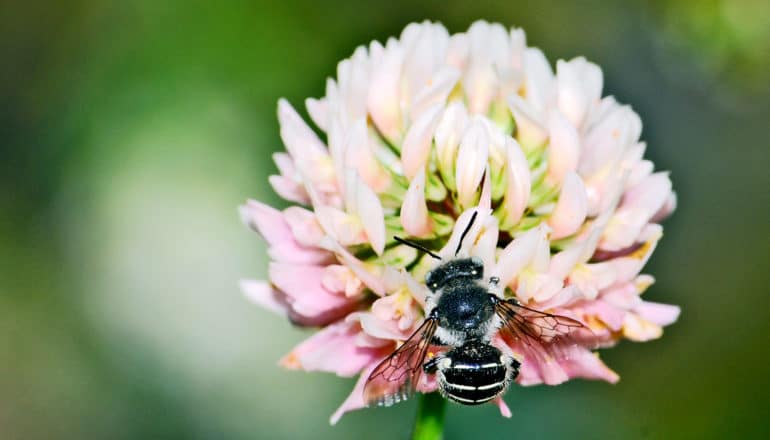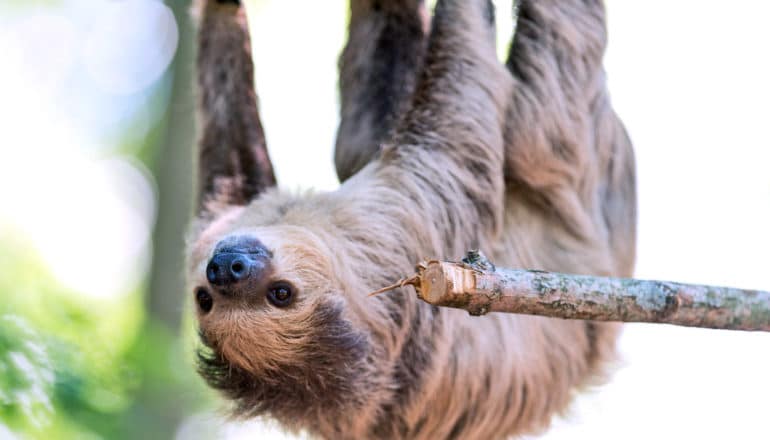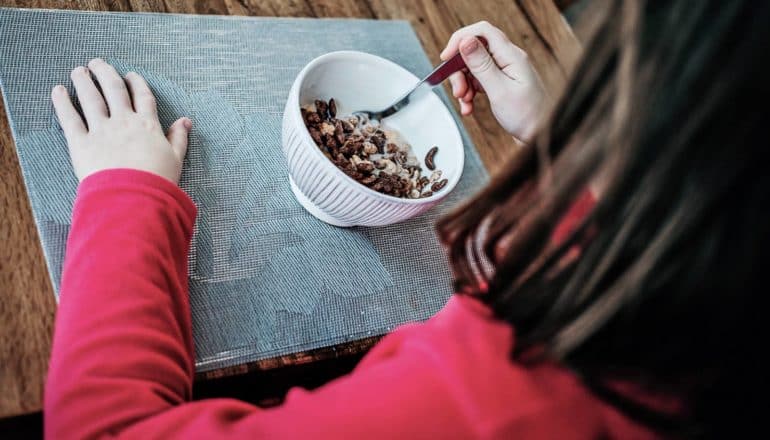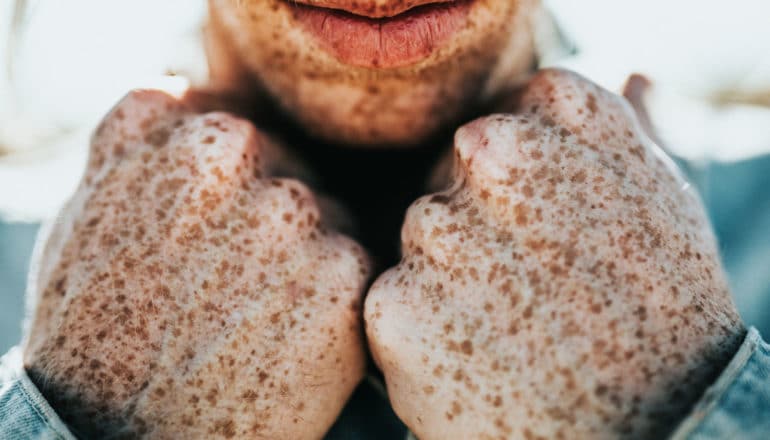
Leahgates
Shared posts
Chester Zoo Announces New Malayan Tapir Calf
A rare Malayan Tapir was born at Chester Zoo on July 18. The calf, which has been revealed as a boy, arrived to proud mum, Margery (age 7) and dad, Betong (age 6).
Weighing just 5kg at birth, the ‘precious’ youngster follows a 13-month-long (391-day) pregnancy.
Baby tapirs have distinctive coats when first born, made up of a series of spots and stripes to help camouflage them on the forest floors in their native South East Asia. This pattern will slowly change over the first six months to the unique black and white pattern of their parents.
Around half of the world’s Malayan Tapirs have been lost in the last 40 years, with fewer than 2,500 estimated to remain in across Malaysia, Sumatra, Thailand and Myanmar. Hunting, illegal logging, and mass deforestation as land is cleared for unsustainable palm oil production are reasons for the decline in numbers. The species is currently listed as “Endangered” on the International Union for the Conservation of Nature’s (IUCN’s) Red List of Threatened Species.
Sarah Roffe, Team Manager, said, “It’s wonderful to hear the pitter-patter of tiny, spotty Malayan Tapir feet again for only the second time ever in the zoo’s long history.”
“Mum Margery is ever so good with the baby. She’s very attentive but also gives him chance to explore and find his feet.”
“The precious calf is another big boost for the international breeding programme, which is working to ensure the already endangered species do not become extinct. In the wild, the Malayan Tapir population has crashed in recent times, largely due to the widespread conversion of their forest habitat to palm oil plantations. If people want to help this wonderful species, then we’d urge them to demand that the palm oil contained in the products they use is from sustainable sources.”
The Malayan Tapir is related to both the horse and the rhinoceros. It is an‘odd-toed’ ungulate (or hoofed mammal), with four toes on each front foot and three on each back foot.
To celebrate the youngster's arrival, keepers at the zoo asked the public to help them to give him a name. The results of the online poll were recently revealed, and the calf's new name is...Rony!
Rescued Sea Otter Pups Get a Second Chance At Shedd Aquarium
The Shedd Aquarium welcomed two orphaned Southern Sea Otter pups that were rescued by the Monterey Bay Aquarium.
The pups, temporarily referred to as Pups 870 and 872, will remain behind the scenes for a few months as they reach important developmental milestones and build bonds with the care staff and the other Otters at Shedd before they are officially introduced to the Otter habitat.
Photo credit: ©Shedd Aquarium/Brenna Hernandez
Video credit: ©Shedd Aquarium/Sam Cejtin
The Otter pups arrived at Shedd on Monday, July 8 and have been thriving behind the scenes, receiving around the clock care from Shedd’s animal care and veterinary teams. Both Otter pups are male and only one week apart in age and born in mid-May. Pup 872 is younger and weighs 13.4 pounds. Pup 870 weighs in at 17 pounds.
The Otters were both taken in by Monterey Bay Aquarium and deemed non-releasable by the U.S. Fish and Wildlife Service. This designation means that because the pups weren’t mother-raised and taught how to survive in the wild, they would not be successful if released into their natural habitat. Shedd offered to provide a home for the pups because Monterey Bay’s successful Sea Otter surrogacy program is currently at capacity with other pups in need.
Pup 870 was discovered stranded on May 18 near Stillwater Cove in Carmel Bay. While the pup was clinically healthy, attempts to locate the mother were unsuccessful, and staff did not want to risk leaving the pup vulnerable and alone.
The second pup, Pup 872, was brought in two days later, on May 20. Pup 872 was found distressed and vocalizing in high winds and heavy surf at Asilomar State Beach. The pup was shivering, hypothermic and its coat was filled with sand – suggesting it was tossed in the surf. The decision was made to immediately take in the pup for stabilization and no further attempts were made to locate a mother.
Read the rest of the pups' story and see more photos below!
Caring for orphaned Sea Otter pups requires extensive care, involving everything from feeding and veterinary check-ups to grooming, playing and more. And only a handful of facilities in the United States have available space, staff and experience to provide that level of care. Currently, 11 institutions across North America, including Shedd, provide homes for 36 non-releasable Southern Sea Otters. Shedd officials and animal care staff quickly accepted Monterey Bay Aquarium’s call to provide the stranded pups with a new home.
“These two pups kept us busy from the moment we arrived,” said Tracy Deakins, senior trainer at Shedd Aquarium who accompanied the Otter pups on their trip to Chicago. “It was an incredibly rewarding experience to see all that Monterey Bay does for Sea Otters and to bring these two pups to their new home here at Shedd.”
As Pups 870 and 872 familiarize with their new surroundings, they’ll also continue to achieve many important milestones, which include eating solid foods such as shrimp and clams and building important Otter skills like foraging for food, grooming on their own and socializing with the other Otters and with Shedd’s animal care team.
“While everyone may not be able to go out and rescue or provide a home for a Sea Otter in need, we have to remember that the survival of a species like the Southern Sea Otter is a group effort – it takes all of us,” said Sloan. “Southern Sea Otters would not be around today if it weren’t for dedicated individuals who passed critical legislation like the Endangered Species Act, providing the protections necessary for the populations to rebound. Our job is to facilitate a connection between the guests at the aquarium and nature to help the public see that we all have the ability to make a difference.”
Since 1984, Monterey Bay Aquarium has been studying and actively helping to recover the threatened Southern Sea Otter, which was decimated by the fur trade for over a century. As part of this work, Monterey Bay Aquarium has long been the primary facility designated to receive stranded Southern Sea Otter pups and adults, developing expertise, protocols and procedures to raise orphaned pups for return to the wild.
The Aquarium’s Sea Otter Program works with wildlife rescue facilities and other aquariums, such as Shedd, to respond to every Sea Otter that comes ashore in distress along the California coast. To date, the program has taken in 876 Sea Otters, finding new homes for 78 of those animals that were deemed not to be good candidates for release back into the wild.
The smallest marine mammal species, Sea Otters are members of the Weasel family. Adult females can weigh between 35 and 60 pounds; males reach up to 90 pounds. Instead of blubber to keep them warm, they have very thick hair that consists of two layers: an undercoat and longer guard hairs. The Otter’s fur is important to their survival, so they spend up to four hours a day grooming. If they do not keep their coat immaculate, they risk getting cold and dying of hypothermia. Sea Otters are listed as Endangered by the International Union for Conservation of Nature.
Pups stay with their mothers until they are up to eight months old. Otters do not mate for life but form a bond that lasts for three or four days. After mating, the male leaves the female and is not involved in raising the pup. Sea Otters must eat at least 25 percent of their body weight each day to maintain a high metabolic rate, which keeps their internal body temperature at 100 degrees. They eat bottom-dwelling nearshore animals, such as Abalone, Clams, Sea Urchins, Crabs and Octopus. Sea Otters have the thickest fur in the animal kingdom, with nearly 1 million hairs per square inch.
Six Fluffy Owlets Discovered At Marwell
Each year, Marwell Wildlife, which owns and operates Marwell Zoo, keeps watch on Barn Owl nests on the lands surrounding the zoo. So far this summer, they’ve discovered six healthy chicks on the property.
The six fluffy Owlets come from two breeding pairs and include three females and three males between five and seven weeks old.
Photo Credit: Marwell Wildlife
Once found, the chicks were carefully removed from the nest for a thorough exam. The staff recorded the weight, wing feather development, body condition, and wing length, as well as noting any unique markings, which help to determine each chick’s age and gender.
The Owlets were then banded by placing a metal ring on the ankles, which will identify each Owl if it is captured in the future. The chicks were then safely returned to their nest boxes.
Marwell has successfully supported 16 Owlets since 2014, when it started working with the South Downs National Park Authority and the Hawk Conservancy Trust to monitor Barn Owl populations within the local landscape as part of the Barn Owl Box scheme (Project BOB). The project records the breeding success and aims to understand the survival and wider movements of Barn Owls.
As part of Marwell’s ongoing commitment to restore habitats, the charity manages more than 100 acres of grassland to create an ideal hunting habitat for this important farmland bird. No pesticides or fertilizers are used on the land. Voles, Shrews, and Mice thrive in this habitat, providing ample food for the Owl families. A single Barn Owl typically eats three to four prey items each night.
Barn Owls live on every continent except Antarctica. The Barn Owl’s heart-shaped face, or ‘facial disk’, collects and directs sound toward the inner ears, which are situated inside the facial disk just behind the eyes. As a result, Barn Owls’ hearing is the most sensitive of any animal ever tested. Owlets develop rapidly. By three weeks of age, they can swallow a whole Shrew or small Mouse. At eight to nine weeks, they begin taking practice flights. At 13 to 14 weeks old, Owlets have reached adult size and leave the nest to find their own home range.
See more photos below.
Who says an unbridled love of cucumbers will never get you anywhere? Because of my love of cucumbers, @hendricksgin aske...
Leahgates#sponcon for cucumbers
Coolin down yo summer heat 🔥
Leahgatesthrowback snowspramps
Soccer Stars & Soc Majors
Sociology Twitter lit up after the US Women’s National Team’s World Cup win with the revelation that many of their players were sociology majors in college. It is an inspiration to see the team succeed at the highest levels and call for social change while doing so.
V important #soctwitter
— Neda Maghbouleh (@nedasoc) July 8, 2019news: Megan Rapinoe, Crystal Dunn, Abby Dahlkemper, & Rose Lavelle were Sociology majors in undergrad #USAvNED #USWNT pic.twitter.com/4cLy99I1ld
This news also raised an interesting question: do student athletes major in sociology because it is a compelling field (yay, us!) or because they are tracked into the major by academic advisors who see it as an “easy” choice to balance with sports?
According to data from the NCAA, the most common majors for both student athletes and the wider student body at Division 1 schools are business, STEM, and social sciences. Trend data show the biggest difference is in the choice between business and STEM; both groups seem to pick up social science majors at similar rates.

While the rate of majors is not that different, there is something special that sociology can do for these students. Student athlete lives are heavily administered. Between practice, conditioning, scheduled events, meals, and classes, many barely have a few hours to complete a full load of course work. In grad school, I tutored many student athletes who were sociology majors, and I watched them juggle their work with the demands of heavy travel schedules and intense workouts, all under the watchful eye of an army of advisors, coaches, mentors, and doctors. The experience is very close to what Erving Goffman called a “total institution” in Asylums:
“A total institution may be defined as a place of residence and work where a large number of like-situated individuals, cut off from the wider society for an appreciable period of time, together lead an enclosed, formally administered round of life. (1961, p. xiii)”
We usually associate total institutions with prisons and punishment, but this definition highlights the intense management that defines the college experience for many student athletes. When I tutored athletes in sociology, we spent a lot of time comparing their readings to the world around them. Sociological thinking about institutions, bureaucracy, and work gave them a language to think about and talk about their experiences in context.
Athletic programs can be complicated for colleges and universities, and there is ongoing debate about how the “student” status in student athlete shapes their obligation to pay for all this work. As debates about college athletics continue, it is important for players, fans, and administrators to think sociologically about their industry to see how it can better serve players as both students and athletes.
Evan Stewart is an assistant professor of sociology at University of Massachusetts Boston. You can follow him on Twitter.(View original at https://thesocietypages.org/socimages)
ZooTampa’s First Koala Joey Emerges
Leahgatesis it just me or is this adult koala extremely smug
A Koala joey recently started to peek out of its mother’s pouch for the first time at ZooTampa at Lowry Park. The joey is the first Koala baby born at the Zoo in its history.
Once an embryo the size of a jellybean, the joey made the journey to mom Ceduna’s pouch, where it is finishing its final stages of pouch life development, with dad Heathcliff nearby.
Koalas are mammals and sometimes referred to as bears, even though they are not. Rather, Koalas are marsupials that differ from other mammals because their newborns develop inside mothers’ pouches instead of a womb. Initially, a joey is blind and earless and relies on natural instincts and strong senses of touch and smell to find its way from the birth canal to its mother’s pouch.
Ceduna, who arrived at the Zoo in 2015, and Heathcliff, who arrived in 2014, are part of the Zoo’s effort to conserve the koala through the Species Survival Plan (SSP) of the Association of Zoos and Aquariums (AZA). After the pair’s successful mating, veterinary and animal care teams are celebrating the recent birth and new addition to the zoo’s Australia habitat, Wallaroo Station.
Throughout the pregnancy and joey’s development, Ceduna’s care has included thermography scans that inform her care team of changes in her muscular, skeletal and nervous systems and ensure optimal health.
“We do routine check-ups with Ceduna to build strong bonds with her and ensure the highest quality of care,” said Lauren Smith, D.V.M., veterinarian at ZooTampa. “The animal care team continues to monitor Ceduna and her baby closely as the joey’s exciting development continues.”
One of Australia’s most iconic animals, Koalas live primarily in forests and woodlands dominated by eucalyptus plants. Though poisonous to other species, specialized bacteria in a Koala’s digestive tract enables it to break down the plant’s toxins and rely heavily on eucalyptus for its food. Mature Koalas spend up to five hours feeding on the plant leaves every day. For this solitary species, the rest of the day is spent sleeping. Up to 95 percent of a Koala’s life is spent by itself.
In large part because of Australia’s national pride in the species, Koalas have survived the threat of extinction from habitat loss and hunting. ZooTampa is committed to continuing to aid the conservation of the species.
“We are proud to support conservation initiatives both at home and beyond,” said Dr. Larry Killmar, Senior Vice President and Chief Zoological Officer at ZooTampa. “Our partnership with the Australian government allows us to support the goals and objectives of the Koala Species Survival Plan.”
Guests can catch a glimpse of Ceduna practicing her yoga poses while her joey clings to her back or belly, until it reaches one year old and can begin climbing trees on its own. To get an even closer look at this unique species, guests can add a Koala Photo Encounter, presented by the Yob Family Foundation, to their visit to meet the joey’s dad, Heathcliff, and receive a photo. Guests are encouraged to stay tuned to the Zoo’s social media pages for more Joey updates.
Let's Learn A New Word
LeahgatesI laughed for several minutes at this joke and I do not know why

that's it, that's the best joke I'm ever going to write, it's all downhill from here
Sea Lion Pups at Omaha’s Henry Doorly Zoo & Aquarium
Visitors to Omaha’s Henry Doorly Zoo and Aquarium can now see two new Sea Lion pups at the zoo’s Owen Sea Lion Pavilion.
The first pup was born June 12 to nine-year-old Gemini. Another was born on June 18 to Coco, who was born at Omaha’s Zoo and Aquarium in June 2009. The sexes of the pups are currently unknown.
The California Sea Lion pups and their mothers are currently on exhibit with the father of both pups, 15-year-old Chino. Omaha’s Henry Doorly Zoo and Aquarium currently has eight Sea Lions: two males, four females and the two new pups.
Photo Credits: Omaha's Henry Doorly Zoo & Aquarium
Visitors noticed that a significant amount of water has been drained from the Sea Lion’s pool. According to the zoo, this was done in preparation for the birth of the pups and will remain at a lower depth until both pups have learned to swim in deeper water. The zoo follows this routine each year in anticipation of pupping season. Mothers begin teaching their pups how to swim as early as a few days old by pulling them into the water for a short period of time for several days, each time getting farther and deeper into the water.
In 2020, Omaha’s Henry Doorly Zoo and Aquarium will open Owen Sea Lion Shores, a new sea lion habitat that will include elements such as natural boundaries, underwater viewing and state-of-the-art holding facilities complete with a diet prep area and holding pools. The area will include a natural beach, which will allow females to give birth on land and gradually introduce their pups to the water as they would in their natural habitats.
An integral part of the Species Survival Plan (SSP) for Sea Lions includes the management of genetic diversity within the zoo network’s population. The SSP evaluates the population status and makes breeding recommendations. There are typically 15-20 breeding recommendations annually for Sea Lions, however, that changes based on the population status.
California Sea Lions (Zalophus californianus) are commonly found along the coastlines of the Pacific Northwest region. Males can weigh between 700 to 1,000 pounds while females can weigh between 200 to 250 pounds.
Everyone has been asking how I’m feeling after taking my thyroid meds. Here’s your answer. 😎#bighineypiney #ipittythebu...
Leahgatesme when I've been feeling like shit, get my bloodwork done, and get an emergency b12 shot
Look lady, I know you have strawberries. You know you have strawberries. Can we just get to the part where you give me t...
Leahgatesgive
5 ways a ‘lazy’ lawn makes pollinators happy

You might feel bad about having a less-than-manicured lawn, but it’s great for bees and other pollinators.
Beyond supporting healthy ecosystems for other species (including us), pollinators are key to bringing food to our tables, not to mention coffee, chocolate, and tequila.
Cutting yourself some slack in the yard can provide pollinators with food, shelter, and protection from pesticides, three things they need to survive. You probably shouldn’t let it all go and risk one of those sanctimonious letters from your homeowner’s association, but a lighter touch can make life easier for native pollinators—and you. Here’s how:
1. Learn to love clover and dandelions
Flowering weeds are an important food source for native bees, so you can feel good about leaving them in your lawn, says Rachel Mallinger, an assistant professor of pollinator ecology and conservation with the University of Florida’s Institute of Food and Agricultural Sciences.
“Providing floral resources is probably the number one thing that people can do, whether that’s just providing a few plants on your balcony, having a whole pollinator garden, or just letting flowering weeds be.”
2. Bare or sandy patches have a function
Unlike honey bees, many species of native bees don’t live in hives or colonies but by themselves in small holes the ground. When you’ve got a thin spot in your lawn or part of your garden that’s not covered in thick mulch or weed barrier, you’re providing habitat to native bees.
And you don’t have to worry about having wild bees in your yard, as they don’t defend their nests the way social bees and wasps sometimes do, says Jamie Ellis, professor of honey bee husbandry, ecology, and conservation.
“In general, it’s the social bees and wasps that are the stinging problems, not the solitary ones,” Ellis says. “Solitary bees are quite gentle.”
3. That old stump is also useful
It’s also a great habitat for solitary native bees, Mallinger says.
4. Let the bugs be
Going easy on insecticides around your home and yard can reduce unintended harm to beneficial species like bees, Mallinger says. And when you use pesticides, choose options that are least toxic to pollinators and follow the instructions on the label, Ellis suggests. For more information, visit the Honey Bee Research & Extension Lab’s website.
5. Bees love lazy mowers
Mowing less often can make your yard more pollinator-friendly. “Our landscapes don’t all have to be really short green grass,” Mallinger says. “We can have yards and habitats that look more wild, but that means changing people’s way of viewing habitats and not seeing that as messy or weedy, but seeing that as actually beneficial.”
If the neighbors complain when you skip a week of mowing, you can say you’re doing it for the bees.
Don’t have a yard? Hear Mallinger’s tips for helping bees and pollinators through food choices and more here:
Source: University of Florida
The post 5 ways a ‘lazy’ lawn makes pollinators happy appeared first on Futurity.
So excited to announce that on June 18th I’m going to be chasing out the first pitch at Nat Bailey Stadium for the @vanc...
Leahgatestruly a dog out standing in his field
Climate’s role in armed conflict will likely increase

Intensifying climate change will increase the future risk of violent armed conflict within countries, according to a new study.
Synthesizing views across experts, the study in Nature estimates climate has influenced between 3 percent and 20 percent of armed conflict risk over the last century and that the influence will likely increase dramatically.
In a scenario with 4 degrees Celsius of warming (approximately the path we’re on if societies do not substantially reduce emissions of heat-trapping gases), the influence of climate on conflicts would increase more than five times, leaping to a 26 percent chance of a substantial increase in conflict risk, according to the study.
Even in a scenario of 2 degrees Celsius of warming beyond preindustrial levels—the stated goal of the Paris Climate Agreement—the influence of climate on conflicts would more than double, rising to a 13 percent chance.
“Appreciating the role of climate change and its security impacts is important not only for understanding the social costs of our continuing heat-trapping emissions, but for prioritizing responses, which could include aid and cooperation,” says Katharine Mach, director of the Stanford Environment Assessment Facility and the study’s lead author.
Climate change-driven extreme weather and related disasters can damage economies, lower farming and livestock production, and intensify inequality among social groups. These factors, when combined with other drivers of conflict, may increase risks of violence.
“Knowing whether environmental or climatic changes are important for explaining conflict has implications for what we can do to reduce the likelihood of future conflict, as well as for how to make well-informed decisions about how aggressively we should mitigate future climate change,” says Marshall Burke, assistant professor of earth system science and a coauthor of the study.
No precedent
Researchers disagree intensely as to whether climate plays a role in triggering civil wars and other armed conflicts. To better understand the impact of climate, the analysis involved interviews with and debates among experts in political science, environmental science, economics, and other fields who have come to different conclusions on climate’s influence on conflict in the past.
The experts, who also served as coauthors of the study, agree that climate has affected organized armed conflict in recent decades. However, they make clear that other factors, such as low socioeconomic development, the strength of government, inequalities in societies, and a recent history of violent conflict have a much heavier impact on conflict within countries.
The researchers don’t fully understand how climate affects conflict and under what conditions. The consequences of future climate change will likely be different from historical climate disruptions because societies will be forced to grapple with unprecedented conditions that go beyond known experience and what they may be capable of adapting to.
“Historically, levels of armed conflict over time have been heavily influenced by shocks to, and changes in, international relations among states and in their domestic political systems,” says James Fearon, professor of political science and coauthor of the study.
“It is quite likely that over this century, unprecedented climate change is going to have significant impacts on both, but it is extremely hard to anticipate whether the political changes related to climate change will have big effects on armed conflict in turn. So I think putting nontrivial weight on significant climate effects on conflict is reasonable.”
How to prepare?
Reducing conflict risk and preparing for a changing climate can be a win–win approach. The study explains that adaptation strategies, such as crop insurance, post-harvest storage, training services, and other measures, can increase food security and diversify economic opportunities, thereby reducing potential climate–conflict linkages. Peacekeeping, conflict mediation, and post-conflict aid operations could incorporate climate into their risk reduction strategies by looking at ways climatic hazards may exacerbate violent conflict in the future.
However, the researchers make clear there is a need to increase understanding of these strategies’ effectiveness and potential for adverse side effects. For example, food export bans following crop failures can increase instability elsewhere.
“Understanding the multifaceted ways that climate may interact with known drivers of conflict is really critical for putting investments in the right place,” Mach says.
Additional coauthors are from Stanford; the University of Exeter; the Peace Research Institute Oslo; the Norwegian University of Science and Technology; the National Bureau of Economic Research; the University of Denver; the University of Antwerp; Lancaster University; the University of Colorado Boulder; the College of William & Mary; the University of Hamburg; and Uppsala University.
The Alexander von Humboldt Foundation, the Stanford Woods Institute for the Environment, the European Research Council, the German Science Foundation, and the Swedish Foundation for Strategic Environmental Research supported the work.
Source: Stanford University
The post Climate’s role in armed conflict will likely increase appeared first on Futurity.
Two-toed sloths belong to an ‘extinct’ family
Leahgatesdoes this mean we can jurassic park some giant sloths

The two-toed sloth appears to be the last survivor of an ancient lineage previously thought extinct, research finds.
Meanwhile, the three-toed sloth is more closely related to a large family that included ancient elephant-sized ground sloths, say the researchers.
Sloths once roamed the Americas, ranging from tiny, cat-sized animals that lived in trees all the way up to massive ground sloths that may have weighed up to six tons. The only species we know and love today, however, are the two-toed and three-toed sloths—but paleontologists have been arguing how to classify them, and their ancestors, for decades.
Two new studies shake up the sloth family tree, overturning a longstanding consensus on how the major groups of sloths are related.
“The results are surprising on many levels,” says Graham Slater, an assistant professor of geophysical sciences at the University of Chicago and coauthor of one of the papers. “Not only do they rewrite sloth classification, they suggest much of what we thought we knew about how sloths evolved may be wrong.”
Collagen in the fossils
Slater’s study, in Nature Ecology & Evolution, uses a new approach that uses proteins in fossils to discover evolutionary relationships. This marks the first time an entire lineage has been mapped with the method.
“All of these ancient sloths must have occupied really important roles in grazing and browsing the landscape, and so they’re important to understanding how these ecosystems worked, but getting a handle on their evolution has been difficult,” says Slater, who specializes in analyzing the patterns of evolution in mammals.
The existing hierarchy is built on how physically similar the fossils look to one another. But Slater, working with Ross MacPhee with the American Museum of Natural History and Samantha Presslee at the University of York, wanted to explore the possibilities of an emerging field called paleoproteomics—extracting information from proteins inside fossilized bone.
Instead of DNA, which is a fragile molecule that needs specific conditions to survive inside fossils—”getting ancient DNA is a bit of a lottery,” Slater says—scientists have been looking at proteins instead. Protein molecules are sturdier, and since DNA is translated directly into proteins, they hold much of the same information. So the scientists extracted collagen from multiple fossils, analyzed it to reconstruct the sequences of amino acids, and then compared these to one another to piece together relationships between the species.
“What came out was just remarkable. It blew our minds—it”s so different from anything that’s ever been suggested,” Slater says.
Gigantic sloths and modern ones
Previously, scientists thought that the unau—the three-toed sloth with cute black lines around its eyes—was an outlier species that diverged early in the group’s evolution. But based on the new evidence, it actually appears to be nested within a large group of different ground sloths that includes those gigantic, elephant-sized sloths.
Meanwhile, the ai (or two-toed sloth) had been classified in with a family called Megalonychidae, which includes everything from Central American and Caribbean sloths to an Ice Age-era American ground sloth that Thomas Jefferson first described (due to the fossil’s large claws, he thought it was a lion). But according to the findings, two-toed sloths are actually the last survivors of a branch previously thought to be extinct, which likely split off about 20 million years ago.
The protein evidence also revealed that those extinct Caribbean sloths were the descendants of an early branch that split from other sloths around 30 million years ago. This is interesting evidence for another longstanding question: whether there was a short-lived land bridge connecting South America and what would become the West Indies, many millions of years ago. If wanderlust drove ancient sloths across the bridge, their presence in the islands would support that idea. Thus far no conclusive fossil evidence has turned up, but the genetic split 30 million years ago makes sense if those sloths were then geographically isolated after the land bridge disappeared.
The new conclusions also cast doubt on our picture of how sloths evolved, because the West Indian sloths look as though they lived in trees. “We’ve been used to thinking that today’s sloths each evolved independently for life in the trees from a ground-dwelling ancestor, but our results suggest that the ancestral sloth may have been at home in both,” Slater says.
Verified results
Though revolutionary, the results square with a DNA analysis released the same day by a group with the French National Centre for Scientific Research and other institutions. That group was able to pull mitochondrial DNA from several critical fossils, and the two independent analyses align very closely. “Exceptional results demand exceptional verification,” says MacPhee, so the two groups agreed to publish simultaneously.
The team is excited about pushing the boundaries of the field of paleoproteomics. Evolutionary paleobiology is greedy for more and older data, and proteins could provide it.
“The very oldest DNA you can get is 800,000 years old, but in theory we should be able to get protein data from specimens that are millions of years old,” Slater says. “A whole bunch of questions suddenly come into reach. It opens doors that we were only dreaming of.”
Funding came from the National Science Foundation.
Source: University of Chicago
The post Two-toed sloths belong to an ‘extinct’ family appeared first on Futurity.
Young ‘hot Jupiter’ offers clues to how planets form
Leahgatesstop objectifying jupiters

CI Tau b is a paradoxical planet, but new research is starting to answer questions about how a planet so large could have formed around a star that’s only 2 million years old.
Researchers conducted a four-year near-infrared spectroscopic analysis of light from the close-orbiting giant exoplanet, or “hot Jupiter,” in a nine-day orbit around its parent star about 450 light years from Earth in the constellation Taurus.
“The exciting thing is that we are able to detect light directly from the planet, and it’s the first time that’s been done for a close-in planet around a star this young,” says Christopher Johns-Krull, professor of physics and astronomy at Rice University and coauthor of a forthcoming study in Astrophysical Journal Letters. “The most valuable way to learn how planets form is to study planets, like CI Tau b, that are either still forming or have just formed.”
For decades, most astronomers believed giant planets like Jupiter and Saturn formed far from their stars over periods of 10 million years or more. But the discovery of dozens of “hot Jupiters” led to new theoretical models that describe how such planets might form.
CI Tau b’s age makes it the perfect candidate for observation with the Immersion Grating Infrared Spectrograph (IGRINS), a unique, high-resolution instrument used during observations of CI Tau b from McDonald Observatory’s 2.7-meter Harlan J. Smith Telescope and Lowell Observatory’s 4.3-meter Discovery Channel Telescope, Johns-Krull says.
Because each atomic element and molecule in a star emits light from a unique set of wavelengths, astronomers can look for specific signatures, or spectral lines, to see if an element is present in a distant star or planets. Spectral lines can also reveal the temperature and density of a star and how fast it’s moving.
Researchers used the spectral lines from carbon monoxide to distinguish the light the planet emitted from the light a nearby star emitted, says Lisa Prato of Lowell Observatory.
“Many of the spectral lines that are in the planet are also in the star,” Prato says. “If both the planet and star were stationary, their spectral lines would all blend together, and we wouldn’t be able to tell what was from the star and what was from the planet. But because the planet rapidly orbits the star, its lines shift back and forth dramatically.
“At about 2 million years old, CI Tau b is by far the youngest hot Jupiter directly detected.”
“We can subtract out the star’s lines and see only the lines from the planet. And from those, we can determine how bright the planet is, relative to the star, which tells us something about how it formed.”
That’s because the brightness of a star or planet depends upon both its size and temperature.
“Direct observational evidence of the mass and brightness of CI Tau b is particularly useful because we also know it orbits a very young star,” says lead author Laura Flagg, a PhD student at Rice. “Most of the hot Jupiters we’ve found are orbiting middle-aged stars. CI Tau’s age gives a tight constraint for putting models to the test: Can they produce a planet this bright and this massive in so little time?”
Flagg’s analysis of spectral lines from carbon monoxide showed that CI Tau b has a mass of 11.6 Jupiters and is about 134 times fainter than its parent star. That provides strong evidence that it formed via a “hot start,” a theoretical model that describes how gravitational instabilities could form giant planets more rapidly than traditional models, Prato says, adding that the new study provides a unique empirical yardstick to measure competing theories.
“At about 2 million years old, CI Tau b is by far the youngest hot Jupiter directly detected,” she says. “We now have a mass and brightness for it—the only directly measured mass and brightness for a young hot Jupiter—and that provides very strong tests for planet-formation models.”
Coauthor Daniel Jaffe of the University of Texas at Austin designed IGRINS, which uses a silicon-based diffraction grating to improve both the resolution and number of near-infrared spectral bands observable from distant objects like CI Tau b and its parent star. Scientists moved IGRINS from McDonald to Lowell midway through the study.
The researchers presented a paper on the work at the meeting of the American Astronomical Society. Additional coauthors are from Lowell Observatory and the University of Texas at Austin. Support for the work came from Rice, the National Science Foundation, the University of Texas at Austin, the Korea Astronomy and Space Science Institute, NASA, and Lowell Observatory.
Source: Rice University
The post Young ‘hot Jupiter’ offers clues to how planets form appeared first on Futurity.
1 swap halves the carbon footprint of your diet
Leahgatesdaaaaaaaaaaaang

If Americans changed their diets by swapping out just one item each day, they could greatly reduce their carbon footprint from food, according to a new report.
“We found that making one substitution of poultry for beef resulted in an average reduction of dietary greenhouse gases by about a half,” says Diego Rose, professor and director of nutrition at Tulane University School of Public Health & Tropical Medicine.
“To our knowledge, this is the only nationally representative study of the carbon footprint of individually chosen diets in the US,” Rose says. “We hope this research will raise awareness about the role of the food sector in climate change and the sizable impact of a simple dietary change.”
Food production is an important contributor to climate change, accounting for about a quarter of carbon emissions globally, researchers say. For the study, they examined the real-world diets of thousands of people in the United States.
Researchers used diet information from more than 16,000 participants in the 2005-2010 National Health and Nutrition Examination Survey, a portion of which asked participants to recall all the foods they consumed in the previous 24 hours.
The researchers then used this information to determine which foods had the highest greenhouse gas emissions and to calculate a carbon footprint for each individual diet.
They found that the 10 foods with the highest impacts on the environment were all cuts of beef and that about 20 percent of participants reported consuming one of these high-carbon foods.
Using simulation, the researchers calculated a new carbon footprint for each diet by replacing beef with the closest related poultry product. For example, a broiled beef steak was replaced with broiled chicken and ground beef with ground turkey. The researchers performed each substitution only one time for each person that consumed one of the high-carbon foods.
Animal foods contribute more to greenhouse gas emissions than plant foods. Ruminant animal foods such as beef and lamb have particularly high carbon footprints because cows and sheep also release methane gas.
“Our simulation showed that you don’t have to give up animal products to improve your carbon footprint,” Rose says. “Just one food substitution brought close to a 50 percent reduction, on average, in a person’s carbon footprint.”
The researchers plan to expand this research, which focused on dietary greenhouse gas emissions, to include other environmental impacts such as water use.
Although not the subject of this study, the researchers point out that food waste and overeating also increase the carbon footprint of our diet. So, in addition to eating low-carbon foods, better meal planning and eating leftovers can also help reduce carbon footprint.
Rose presented the paper at the American Society for Nutrition’s annual meeting in Baltimore.
Source: Tulane University
The post 1 swap halves the carbon footprint of your diet appeared first on Futurity.
Paid parental leave benefits moms and babies
Leahgatesalso, water is wet

California’s paid parental leave law appears to have improved the mental health of mothers and the overall welfare of their infant children, according to new research.
The study is the first to assess the impact of paid family leave on maternal well-being.
Using data from the National Survey of Children’s Health and the Behavioral Risk Factor Surveillance System, the study finds a 5.5 percent to 9 percent improvement in self-reported ratings of mental health among California mothers after the 2004 implementation of paid family leave, as compared to women who gave birth in California before the law went into effect and to those who live in other states.
The study also found improvements in overall infant health and reduced rates of asthma among children born after the law’s implementation, according to study author Lindsey Bullinger, an assistant professor in Georgia Institute of Technology’s School of Public Policy.
“So much of the focus on paid family leave is on the employment implications. But paid time off to recover from childbirth and bond with a child could also have effects on the health of both parents and children. Some research has explored the health effects for children, but nearly no research has looked at the health of those who take the leave in the US,” Bullinger says.
The study did not find any improvement as a result of the law in how new fathers reported their mental health status, or in measures of respiratory or food allergies in children. But it did find improvements in how parents felt like they were coping with the day-to-day demands of parenting.
The improvements in maternal mental health and overall child well-being may be the result of children spending more time at home after birth instead of in daycare, increased opportunities for parents to care for their children, reductions in parental stress and anxiety, and improved economic outcomes, all of which have been shown to have a positive effect on child health, according to the study.
The results were particularly strong in low-income households, Bullinger says.
“Many families do not have paid leave through their employers and cannot afford to take unpaid leave after the birth of a child,” Bullinger says. “Relative to higher-income families who can, paid family leave could be more impactful for poorer families, since the jump between what leave they could afford to take before the law compared to after the law is larger. And that’s what we see in the study. Paid leave in California had stronger effects for children and parents from lower income families.”
Paid family leave is a perennial issue across the United States, and the results contained in the new paper could prove useful to state and federal lawmakers considering implementation of such policies, Bullinger says.
“Most of the research on paid family leave is from Europe and Canada. But there, leave lengths are much longer, in the range of 25 to 52 weeks, so it is not clear if that research is helpful in the US where leaves are typically much shorter. These findings can help policymakers in both designing programs and evaluating the costs and benefits of those programs in the US.”
The study appears in the Journal of Health Economics.
Source: Georgia Tech
The post Paid parental leave benefits moms and babies appeared first on Futurity.
For food security, SNAP and WIC aren’t redundant

New research provides evidence that two food assistance programs, SNAP and WIC, are in fact complementary, not redundant.
Forty million Americans, including 6.5 million children, are food insecure, according to the US Department of Agriculture, which means they do not have enough food for an active, healthy life.
Many rely on SNAP (the Supplemental Nutrition Assistance Program)—the largest food assistance program for low-income families—to help make ends meet. Still, 51.2 percent of households receiving SNAP benefits, commonly known as food stamps, were food insecure in 2016.
Given the extent of food insecurity, economists developed a economics-based methodology to analyze potential redundancies between SNAP and WIC (the Special Supplemental Nutrition Program for Women, Infants and Children), the third-largest food assistance program in the US.
Their research, published in the Southern Economic Journal, shows that participating in both SNAP and WIC compared to SNAP alone increases food security by at least 2 percentage points and potentially as much as 24 percentage points.
Difficult to measure
“Our findings can help policymakers design more efficient programs to meet food needs,” says Helen Jensen, professor emeritus of economics at Iowa State University. “We know low-income families often participate in more than one food assistance program, and we find the combination of SNAP and WIC helps reduce food insecurity for participating households.”
The programs are similar, but serve different needs. WIC covers specific foods to meet the nutritional needs of pregnant women, new mothers, and infants and young children. Participants also receive nutrition counseling and referrals for health services, such as prenatal programs.
In comparison, eligible households can use SNAP benefits to buy most food items. All households included in the study were potentially eligible for both programs, but chose whether or not to participate.
This “self-selection” makes it difficult to ascertain whether a program causes a change in food insecurity, researcher say. WIC and SNAP benefits are not randomly assigned, so any differences in food security outcomes between participants and nonparticipants could be due to actual causal impacts of the programs or unobserved differences between households that apply for benefits and those that do not.
If households at greatest risk of becoming food insecure are most likely to apply—for example, in the case of a job loss—it might falsely appear the programs are ineffective in alleviating food insecurity, the researchers say. In fact, while participants may be less food secure than eligible nonparticipants, participants may still be more food secure than they would have been in a world without the programs.
Further, households may systematically under-report benefits, often because they don’t want to admit they are receiving government assistance.
“For these reasons, traditional econometric methods lead to misleading estimates,” says Oleksandr Zhylyevskyy, associate professor of economics. “With that in mind, we developed a methodology that allows us to more accurately measure the true effects of WIC and SNAP.”
True benefits
The researchers applied their methodology to data from the USDA’s National Household Food Acquisition and Purchase Survey or FoodAPS, which provides self-reported household participation in SNAP and WIC and validated data for SNAP participation. The study included 460 households that were income-eligible for both programs. Researchers surveyed them for one week.
On average, households were families of four with two children, one under the age of six. The average monthly income was about $1,600. More than 75 percent rented a home or apartment, 26 percent did not own or lease a vehicle, and 11 percent had used a food pantry within the past 30 days.
FoodAPS matched survey responses about SNAP participation with official administrative records to identify response errors, but no similar verification was available for WIC. The new methodology was specifically designed to handle this type of scenario in which researchers can corroborate answers for some survey questions, but not others, the researchers say.
“Our goal was to strike a balance between making assumptions that are weak enough to be credible, but strong enough to be informative,” says Brent Kreider, professor of economics. “Policymakers may ask whether these programs actually work or merely increase government spending without reducing food insecurity. We find WIC helps even when SNAP is already in place.”
The National Bureau of Economic Research funded the work.
Source: Iowa State University
The post For food security, SNAP and WIC aren’t redundant appeared first on Futurity.
‘Virtual biopsy’ device detects skin tumors in 15 minutes

A new “virtual biopsy” device uses sound vibrations and pulses of near-infrared light instead of a scalpel to quickly determine a skin lesion’s depth and potential malignancy, a new study reports.
The ability to analyze a skin tumor non-invasively could make biopsies much less risky and distressing to patients, researchers say.
Currently, physicians who perform surgical biopsies often don’t know the extent of a lesion–or the necessity of referring the patient to a specialist for extensive tissue removal or plastic surgery–until surgery has already begun.
The first-of-its-kind experimental procedure, called vibrational optical coherence tomography (VOCT), creates a 3D map of the lesion’s width and depth under the skin with a tiny laser diode.
It also uses soundwaves to test the lesion’s density and stiffness since cancer cells are stiffer than healthy cells. An inch-long speaker applies audible soundwaves against the skin to measure the skin’s vibrations and determine whether the lesion is malignant.
“This procedure can be completed in 15 minutes with no discomfort to the patient, who feels no sensation from the light or the nearly inaudible sound. It’s a significant improvement over surgical biopsies, which are invasive, expensive, and time-consuming,” says Frederick Silver, a professor of pathology and laboratory medicine at Rutgers Robert Wood Johnson Medical School, and lead researcher of the paper in Skin Research & Technology.
A prototype VOCT device accurately distinguished between healthy skin and different types of skin lesions and carcinomas, the study shows. The researchers tested the device over six months on four skin excisions and on eight volunteers without skin lesions.
Further studies are needed to fine-tune the device’s ability to identify a lesion’s borders and areas of greatest density and stiffness, which would allow physicians to remove tumors with minimally invasive surgery.
The researchers are currently waiting for FDA approval for large-scale testing. Additional researchers are from Rutgers, the Neigel Center for Cosmetic and Laser Surgery, and the Center for Advanced Eye Care.
Source: Rutgers University
The post ‘Virtual biopsy’ device detects skin tumors in 15 minutes appeared first on Futurity.
We're busy napping (and melting hearts ♥️) and Mom's busy making stuff 😁 Seems like a great way to spend a cloudy Satu...
Leahgatesthe stackenblocken of cuddles
Female Calf Joins Sitatunga Herd at Maryland Zoo
Leahgatesthis animal's defining feature is how fluffy its butt is
The Maryland Zoo in Baltimore recently welcomed a Sitatunga calf to its growing herd. The female calf was born on June 4 to first-time parents, Jess and Jabari.
“She is a healthy eight-pound calf,” stated Erin Cantwell, mammal collection and conservation manager at the Zoo. “This is Jess’ first baby, and she is a very attentive mom. The calf is tiny, but she’s doing quite well.”
The Sitatunga (Tragelaphus spekii) is a species of antelope native to Central Africa. They live in swamps, marshes and flood plains. Outside of protected areas, Sitatunga are vulnerable to over-hunting and habitat loss, as people drain and develop swampland. Currently, Sitatunga are not classified as threatened or endangered.
The Maryland Zoo’s Sitatunga herd is made up of 12 animals, including the new calf, and can be found in two exhibit spaces along the boardwalk in the African Journey section of the Zoo.
“Right now, Jess and her calf are bonding behind-the-scenes," said Cantwell. “Based on their health and the weather, we anticipate it will be a couple of weeks before they will be in the Sitatunga Yard making their public debut.”
The calf’s birth was the result of a recommendation from the Sitatunga Species Survival Plan (SSP) coordinated by the Association of Zoos and Aquariums (AZA). SSPs provide breeding recommendations to maximize genetic diversity, with the goal of ensuring health of the individual animal, as well as the long-term survival of the species population to help save animals from extinction.
Meet Akeno the Baby Rhino at Chester Zoo
Leahgatesbaby rhino blowing a raspberry halfway down
Zookeepers at Chester Zoo have revealed the name of a rare baby Rhino born on May 3.
Meet Akeno, the Greater One-horned Rhinoceros calf – only the second of his kind to ever be born at the zoo. The name Akeno is of Asian origin, meaning “beautiful sunrise.”
Photo Credit: Chester Zoo
Although he is just six weeks old, Akeno has bundles of energy and is proving to be a real handful for his 11-year-old mother, Asha.
Greater One-horned Rhinos can weigh up to 2.4 tons as adults, but despite their bulky size, they can run at speeds of up to 25 mph.
Also known as Indian Rhinos, Greater One-horned Rhinos live in northeastern India and southern Nepal. Like all Rhinos, they feed on grasses and other vegetation. And, like Rhinos in Africa and other parts of Asia, Greater One-horned Rhinos are illegally hunted for their horns, which are mistakenly believed to have medicinal properties in some cultures. In reality, Rhino horns are made of keratin, the same substance that makes up human hair and fingernails.
Due to overhunting and habitat loss, only about 200 Greater One-horned Rhinos remained in the wild by the middle of the 20th century. Steps to protect the Rhinos were taken just in time and today, about 3,500 live in the wild. They are currently listed as Vulnerable on the International Union for Conservation of Nature (IUCN) Red List of Threatened Species.
See more pictures of Akeno below.
A Dime A Dozen
Leahgatesmy war on the notion of the "ideas guy" continues

Andean Bear Siblings Out and About at Queens Zoo
Two Andean Bear cubs born at the Queens Zoo recently made their New York City debut.
The cubs, one female and one male, were born in January to six-year-old mother, Nicole, and eight-year-old father, Bouba. After spending several weeks in their den bonding with their mother, they have now started venturing into the zoo’s outdoor habitat.
Queens Zoo animal care staff have named the cubs Brienne and Benny, and staff are closely monitoring their health and development. The time the cubs spend in the outdoor habitat will vary until they become fully acclimated to it.
“These little cubs are tremendous ambassadors for their species,” said Scott Silver, Queens Zoo Director. “Andean Bears are rarely seen in the wild, so it’s extremely special to have an opportunity to watch cubs grow. Guests will also learn about our efforts to protect Andean Bears in the wild.”
Photo Credits: Julie Larsen Maher /WCS
Andean Bears (Tremarctos ornatus) are the only bear species native to South America. They are also known as spectacled bears due to the markings on their faces that sometimes resemble eyeglasses. They have characteristically short faces and are relatively small in comparison to some other bear species. As adults, males weigh between 250-350 pounds while adult females rarely exceed 200 pounds.
Andean Bears are classified as “Vulnerable” by the International Union for the Conservation of Nature (IUCN). Estimates indicate that there are fewer than 18,000 remaining in the wild.
The Queens Zoo is breeding Andean Bears as part of the Species Survival Plan (SSP), a cooperative breeding program designed to enhance the genetic viability and demographic stability of animal populations in zoos and aquariums accredited by the Association of Zoos and Aquariums (AZA). There are currently only 39 Andean Bears in AZA-accredited zoos and only six potentially viable breeding pairs in the SSP population.
Bouba came to Queens from Bioparc de Doue la Fontainein in France to breed with Nicole, who was born at the Smithsonian’s National Zoo in Washington, DC and came to the Queens Zoo in 2015. This is the second time the pair has produced offspring at the Queens Zoo, and these cubs were two of only four Andean Bears born in zoos worldwide in the past year.
More great pics below the fold!
Paradise Park Hatches Their First Brazilian Tanager
Leahgatesthis birb looks Aghast in every shot
Keepers at Paradise Park, in the UK, are excited about their first successful breeding of the Brazilian Tanager species.
Director, Alison Hales, remarked, “Our pair arrived from Newquay Zoo last year and settled well into one of the South Aviaries. These aviaries are in full sun which the birds like, but there is also a dense, leafy shrub in there and that is where they chose to make their nest.”
“They share their aviary with a pair of Luzon Bleeding-heart Doves, which works out well as these are ground doves so the species don’t interfere with each other.”
“The adults are very attentive, and particularly love to pick out the wax worms we feed them to pass on to their chick. I’m sure this little family will continue to thrive.”
The Brazilian Tanager (Ramphocelus bresilius) is a species of bird in the family Thraupidae. They are native to lowland coastal forests of Brazil, and can also be found on the outskirts of cities.
Tanagers are quite territorial, living in pairs or small groups consisting of parents and their offspring. Fruit makes up a large part of their diet, along with insects. As well as a bowl of food in their hut, the keepers at Paradise Park have a ‘peg board’ at the back of the aviary where they can spike fruit for the birds to eat.









